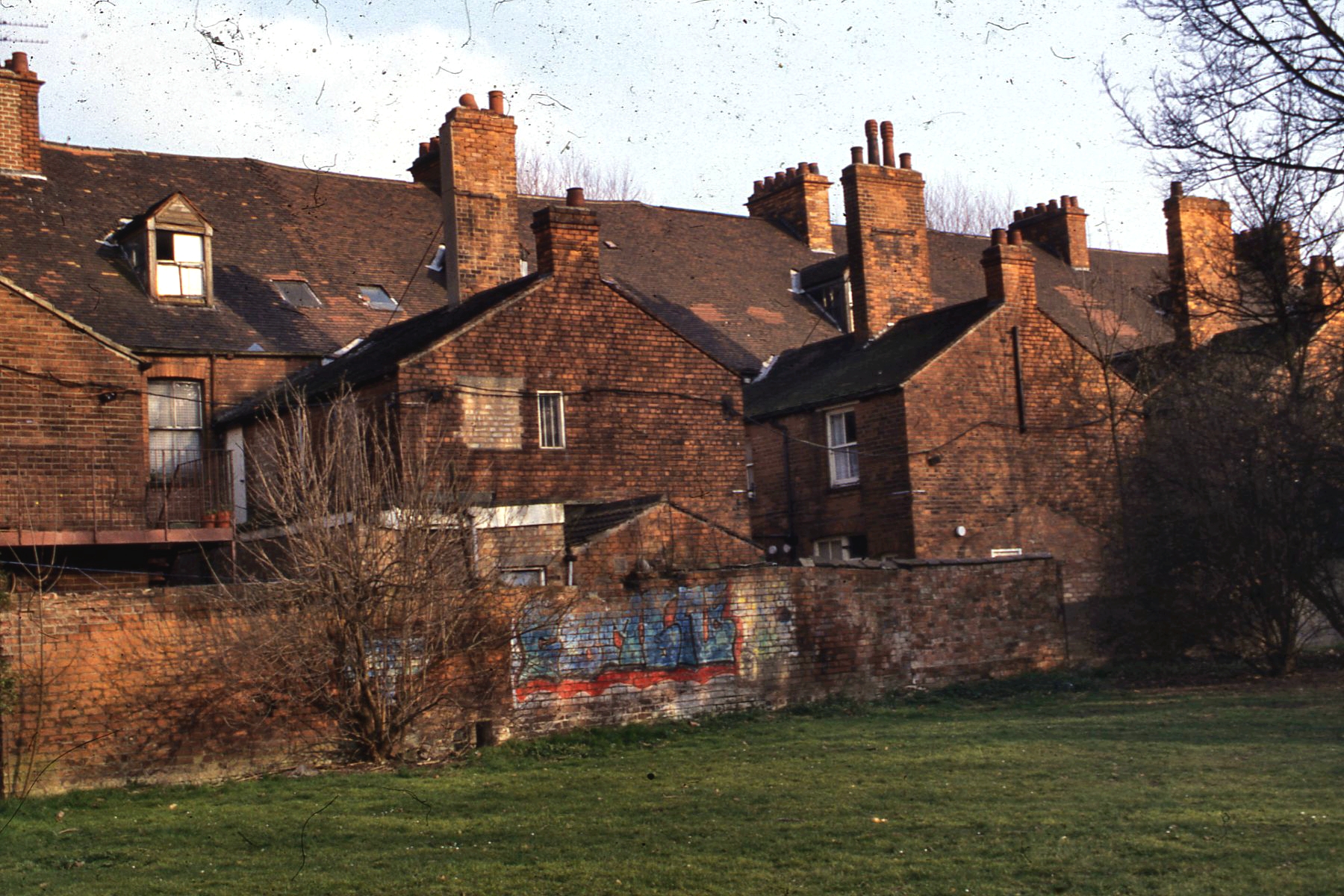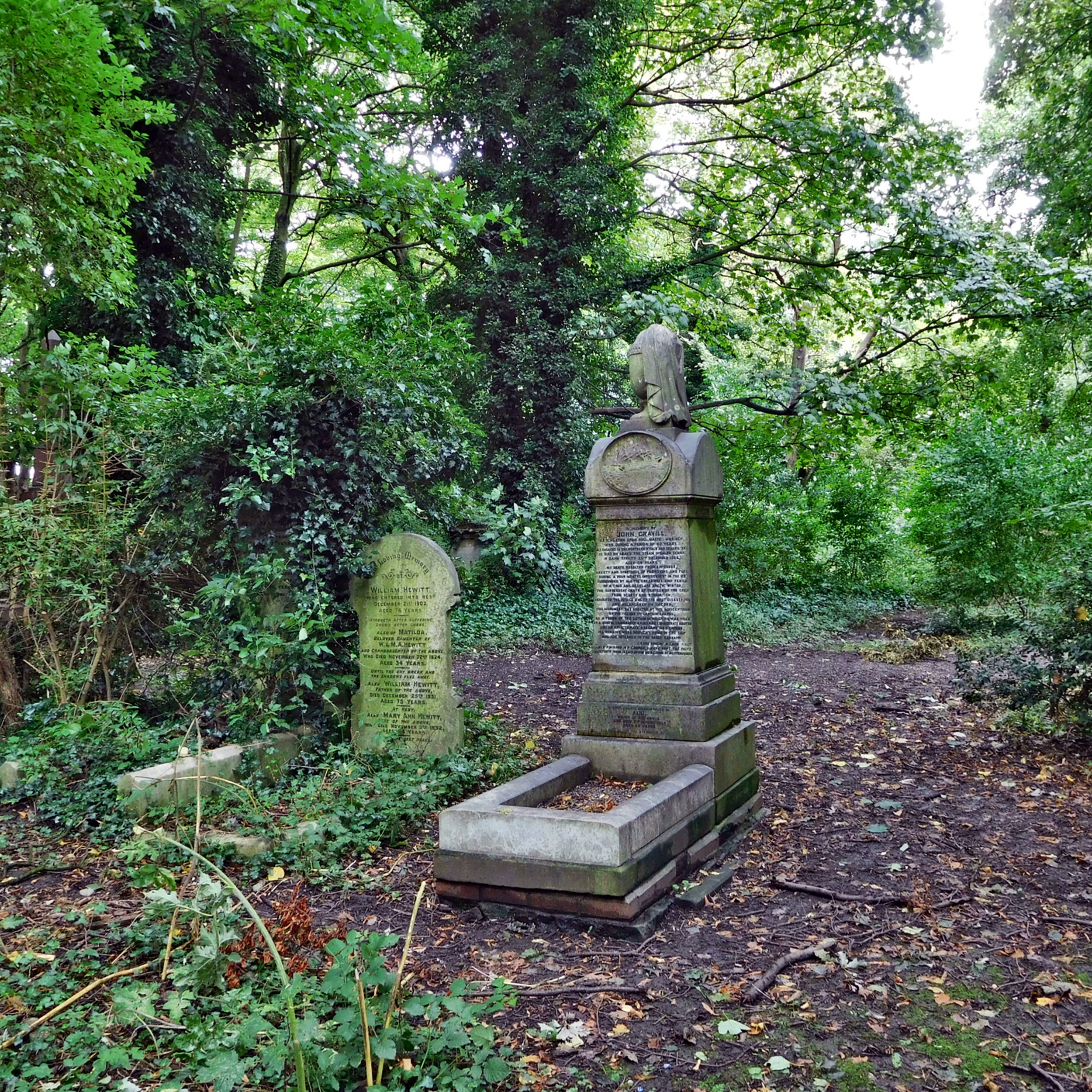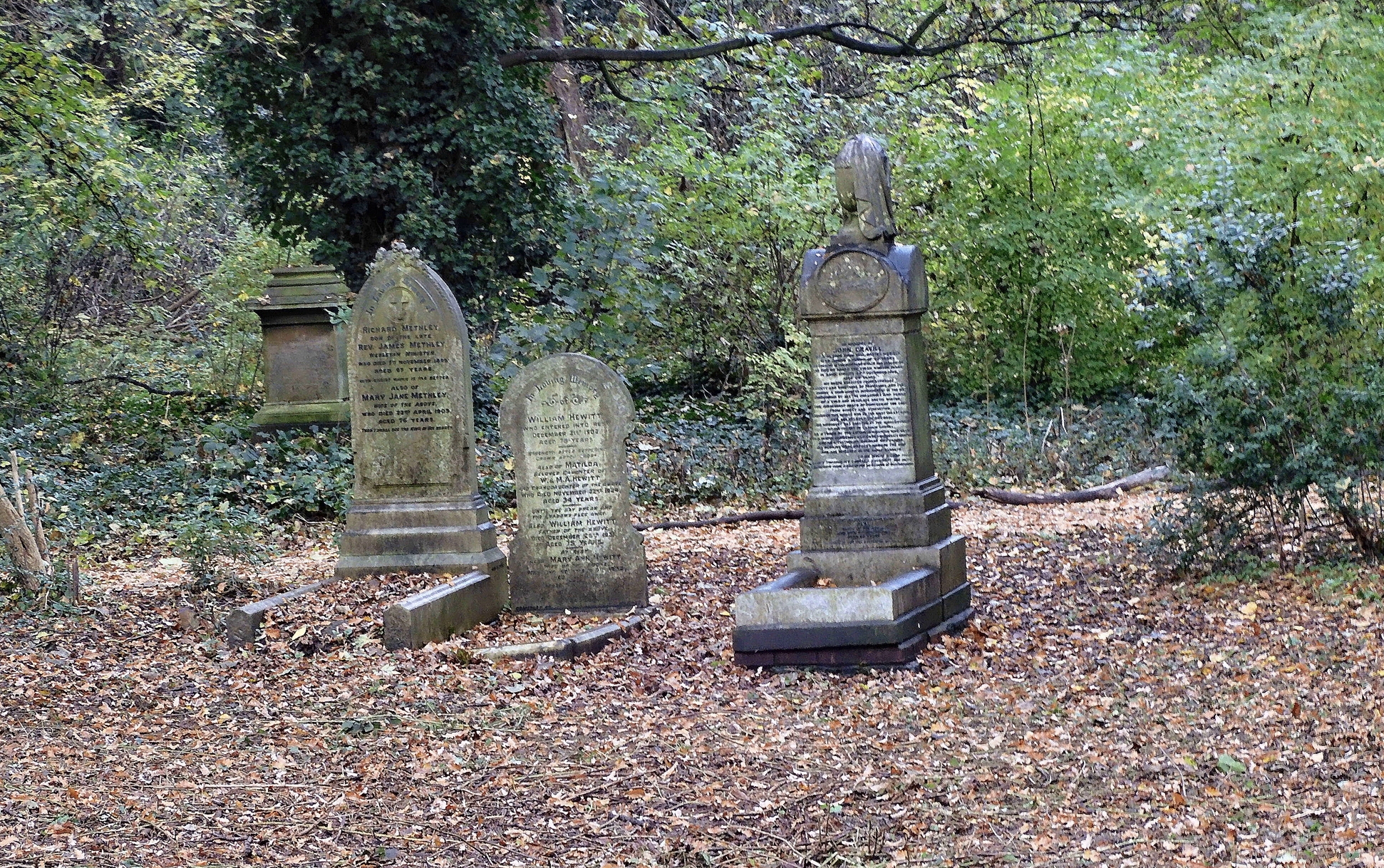The NFCF
The National Federation of Cemetery Friends (NFCF) is a national grouping. It was set up in 1986 to ‘promote the understanding and appreciation of cemeteries and actively to encourage their preservation and conservation.’ The FOHGC joined the National Federation of Cemetery Friends in 2018 as an associate member.
The NFCF sent an email in which it wondered how such groups as ours were responding to the Covid-19 crisis. They requested any information that could be shared within their national newsletter. So we decided to share with them how the Friends of Hull General Cemetery were and are dealing with the pandemic.
The core of volunteers working in Hull General Cemetery is small, and the area to be reclaimed is large, so social distancing was never a problem. We’re sure the same is true for all groups similar to ours.
The Shops
An area that had been earmarked for reclamation from the neglect of the last 30 years or so was sited at the back of a line of shops. These shops front onto a popular shopping district called Princes Avenue. The land that the shops occupied had originally been part of the Cemetery. The Cemetery Company had sold it off in 1907. It had realised that, with the expansion of Hull, the rural lane of Newland Tofts Lane had now become a much more salubrious area including the Avenues. As such this land could be sold to help with the Company’s cash flow problems.
The shops have had numerous occupants over the years. Now the area is second only to the city centre for its bars, cafes and restaurants. A boon for the café culture but such enterprises often come with a surfeit of rubbish. Unfortunately, some of that ends up in the cemetery by design or accident.
The other problem issue with this area is the sycamore seedlings that have occupied any vacant space over the last 20 years or so. That coupled with rampant ivy growth and the ubiquitous blackberry bushes gives the reader a flavour of the area. The piled-up rubbish is just the icing on the cake.
The Friends knew that they could only take on this area during the period when birds were not nesting and laying their eggs. Effectively, at least in our area, this period is the middle of October to the beginning of February.
The Task in Hand
To gain an appreciation of the work to be done here’s a ‘Before’ photograph taken in 1993 and a ‘During’ one taken last week. The same building is in the background to both of these photographs. As you can see the theory of ‘managed neglect’, espoused by some, was not a success.


During the period of the first lock down, the volunteers continued with their efforts to reclaim the paths of the cemetery. This was achieved mainly through the use of the chipping machine. This machine was bought through the aid of a grant from a local charity. The copious wood cuttings are now turned into chippings. These could be spread onto the paths and allow more access to the site by the public including enhancing disabled access.

A bulb planting exercise in August and September took place. This appeared to attract more volunteers as the task was undertaken by the side of a very busy roadside.
Yorkshire Wildlife Trust
Upon the advice of the Yorkshire Wildlife Trust, two areas were earmarked for the creation of wild flower meadows to attract invertebrates, especially moths and butterflies. These areas were cleared in early October. Part of the cemetery ground that contained over 10,000 workhouse burials was also cleared A granite memorial was purchased. Inscribed with a suitable inscription, it commemorates the unfortunate people buried there. These people were buried there and were denied any token of remembrance at their burials. Further planting of native trees and shrubs was also undertaken in this area.
By the time Hull had achieved (?) Tier Two level, and just prior to the second national lockdown, the work outlined above to the area behind the Princes Avenue began in earnest. It still continues and will until it has to halt for the birds beginning their nesting again.
Here are two images that show what can be done. They are a ‘before’ and an ‘after’ of the burial place of John Gravill, a listed monument with Historic England. John Gravill, died on December 26th 1866, whilst his whaler was entombed in ice in the Davis strait.

His body was brought back for burial in Hull. His funeral was attended by over 20,000 people. This figure was probably about a third of the entire population of the town at that time.

Now, I sent some of these photographs along to the National Federation of Cemetery Friends, along with some text and they replied saying that this was ideal and that it would be included in their next national newsletter. So, the work that the volunteers are doing will be seen on a much wider platform. In a sense it’s putting Hull General Cemetery on the national map, and for that all of us who care about the cemetery should be extremely grateful. Thank you Bill and all of his merry helpers.

Pete Lowden is a member of the Friends of Hull General Cemetery committee which is committed to reclaiming the cemetery and returning it back to a community resource.

